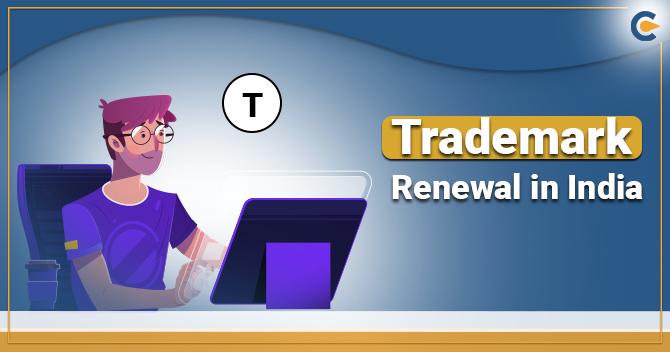The Trademark Registration Process is required when an individual seeks comprehensive protection of a mark against the unauthorized access. Trademark registration renders statutory rights to avail legal actions against the defaulters involved in the contravention of the trademark.
Trademark registration offers the exclusive right to the owner regarding its usages on products and services. An individual needs to follow a legal process to avail of trademark registration. Without registration, a person cannot declare that a mark is under statutory protection. This article would explain everything regarding the process of Trademark Registration.
Overview on Trademark Benefits
Trademark Registration renders countless advantages to the company once the brand starts reaping recognition in the marketplace. The trademark is capable of establishing a unique identity for the products and services in the long run. The trademarked products are good at grabbing customer’s attention when contrasted with the generic products. It protects your mark for years to come against the possible exploitation. Trademark is an extremely vital intangible asset for the companies endeavoring to establish their brand in the new market.


Read our article:How Can You Apply For Online Trademark Registration in India?
Step By Step Process of Trademark Registration in India
The following section will help you complete the process of trademark registration in India.
Trademark Search
Step 1: Trademark selection is the first step in the registration process.
Step 2: It is advisable to go through the trademark record registry and ensure that the proposed trademark does not contradict other registered marks.
Step 3: The search can be conducted via the trademark office or an online portal.
Step 4: It is advisable to seek professional guidance from experienced lawyers to overcome the statutory constraints regarding such a process. After comprehensive research, the registration application can be filed in a prescribed form.
Filling of Form TM-1
Fees Involved: – Rs. 4,000/application + fees charged by the lawyers.
Step 1: The registration application of a trademark encloses the following particulars:-
- “Mark” selected for the registration purpose.
- Information regarding trademark owner.
- Description of the goods and services proposed to be trademarked.
Step 2: The trademark applicant can be filed both offline & online mode.
- For online application: the applicant needs to the furnish a Class III Digital Signature Certificate
- For offline application: An application regarding the trademark registry offices is required.
Step 3: Once the registration application for the trademark is filed, the registrar will verify whether the proposed mark is contradicting with the registered marks. Besides, the registrar will also look into pending applications to ensure that no application seeks an identical request.
Step 4: The registrar can raise concerns regarding the application’s authenticity and can even intimate the applicant for the same. On the other hand, the applicant is liable to render the feedback against the registrar’s concerns within the three months.
Charges Associated
- Form TM-1 legally encloses only one application. If an applicant seeks trademark registration for different classes, then the separate application has to be made for the same.
- Rs 4000 would be charged by the relevant authority to serve such a purpose. Lawyer’s typically charged Rs 2000 in such a case.
- In the case of logo registration, an applicant must furnish a jpeg image format of the same.
- The acknowledgment, which encloses the application number and filing date, is obtained promptly, but the applicant would have to wait for two days to avail Original Representation Sheet.
Use of Trademark
Once you availed the trademark registration, you can use the ‘R’ symbol that serves the validity period of 10 years.
Issuance of the Examination Report
Issuance of the Examination Report typically takes 3 to 6 months for the completion. Though it adheres to no cost, it would charge Rs. 4000 to Rs. 6000 from the applicant in case if an authority ends up with objectionable elements regarding the application.
In this stage, the authority will strive to identify any objectionable elements in the application. If they find everything to the point, they will issue the letter of acceptance, aka TLA to the applicant.
On the contrary, if the authority pinpoints something unusual in the application, the same would be communicated to the applicant to rectify the issue. Objections typically arise in the following conditions. Those are as follows:-
- If a proposed trademark resembles with the already registered trademark.
- If a word or logo contains offensive traits that might trouble a person’s sentiment or religions.
The applicant has the legal right to challenge the objection. To serve this purpose, the applicant has to bear an additional fee Rs. 3,000 along with a lawyer’s fee, which precisely costs around Rs. 4,000 to Rs. 5,000. The lawyer will prepare the response against the objection raised by the authority. Thus, the lawyer must scrutinize the matter thoroughly.
Advertisement in the Trade Marks Journal
The trademark would be published in a trademark journal once the authority accepted the registration application. Such action would let the authority confront the probable objections raised by the concerned entities on account of the Trademark Act’s violation.
The published trademark encompasses the detail such as the list of goods or services and registration dates. The registered trademark serves the validity period of 10 years and can be renewed within six months from the expiration date.
If no one raises any objection w.r.t trademark within the four months of the publication, the authority will award the registration certificate within 6 to 10 months. In case of any objection, the process may be delayed for a couple of months.
Trademark Registration
Approximately eight to nine months is required for the issuance of a trademark certificate from the date of publication in the trademark journal. The required trademark would remain legally valid for ten years, and after that, it can be renewed.
Conclusion
Trademarks could exist in the form of pictures, designs, and even expressions. Since a trademark is classified as intellectual property, it helps the company to secure its intangible assets against possible infringement and exploitation.
Read our article:Grounds for the Refusal of the Trademark Registration











